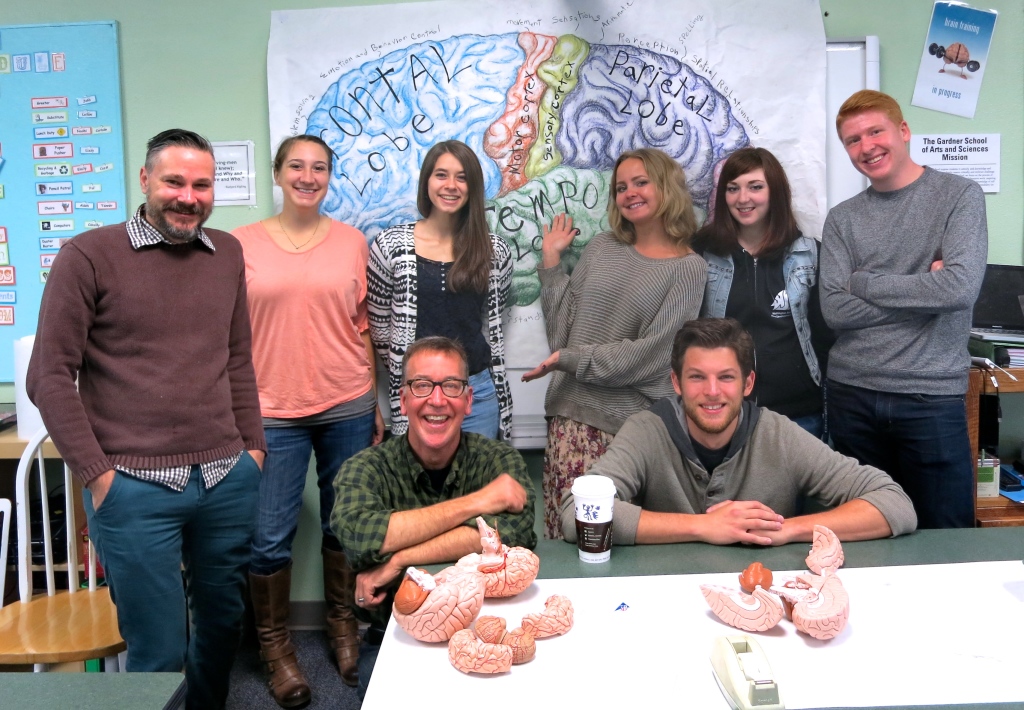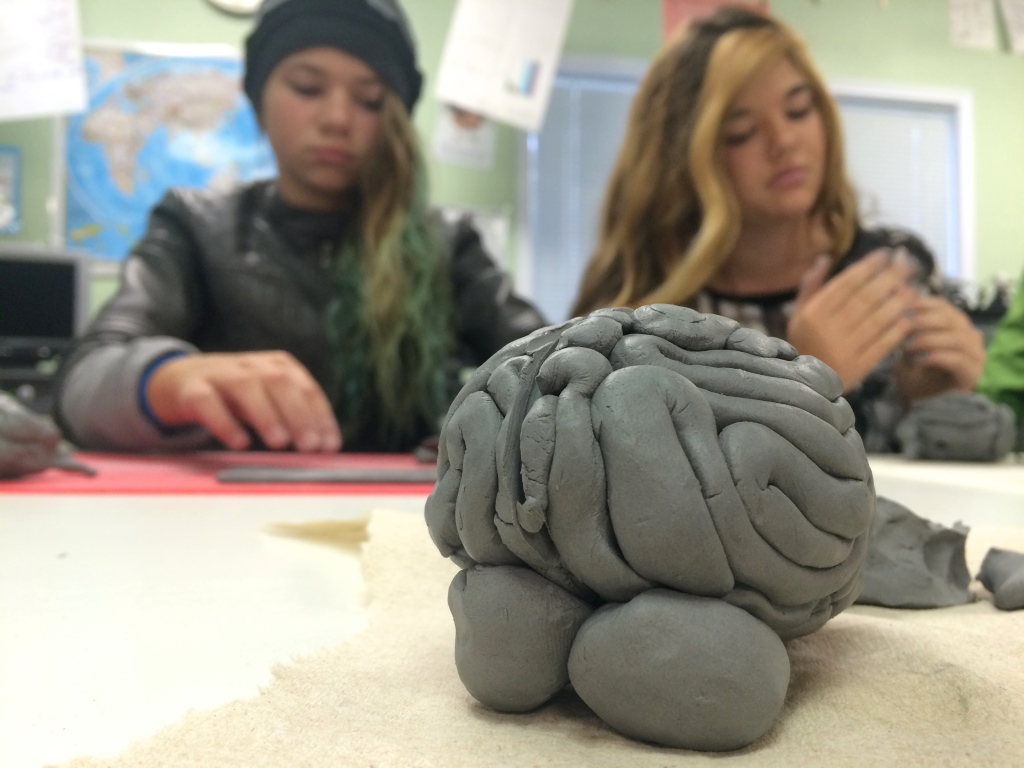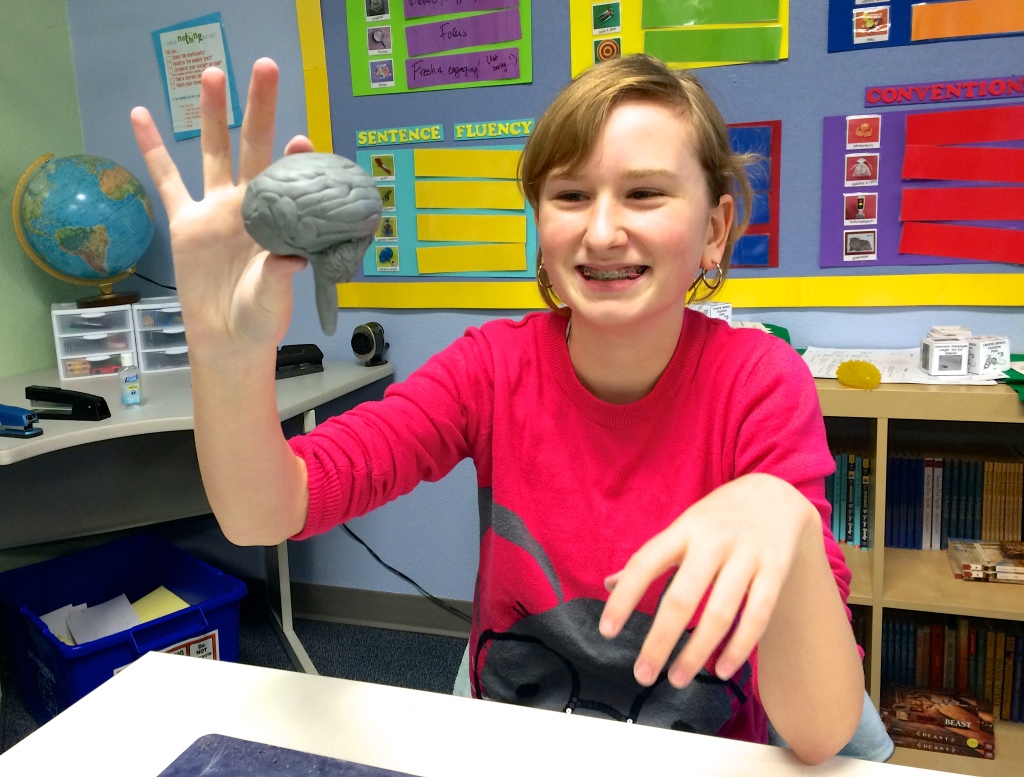Today our intrepid Noggin volunteers from WSU Vancouver and Portland State University came to the Gardner School of Arts and Sciences, literally just down the road from WSUV.
The middle schoolers have been learning about their brains, with help from their teacher Caitlin Littlefield, and we enjoyed a lively discussion with thirty students about what the nervous system is actually made of (neurons!), how it changes through growth and experience, and what particular brain regions and networks manage to do…

Students asked great questions, and were thrilled to discover that frontal lobe regions important for “appropriate” social decision making, which experience rapid development during adolescence, also fail to work optimally sometimes in adults, too! We identified some key situations where that tends to occur: with stress, fatigue, alcohol…
We also delved into regions important for body sensations and spatial mapping of our environments (e.g., parietal lobes), visual recognition of faces, animals, and other objects, and memory for episodes in our lives (temporal lobes) – and explored the more hidden, insular lobes, critical for mapping the internal, visceral state of our bodies…
Our WSUV and PSU undergraduates (Chelsey Taylor Anderson, Matt Wadzita, Sean Reilly, Kathryn Ann Freese, Grace Hoinowski), and high school volunteer Alli Probst, took the lead in introducing these individual brain areas, and explained their functional significance to the Gardner School students…
And then, we got to touch and hold some actual human brains!
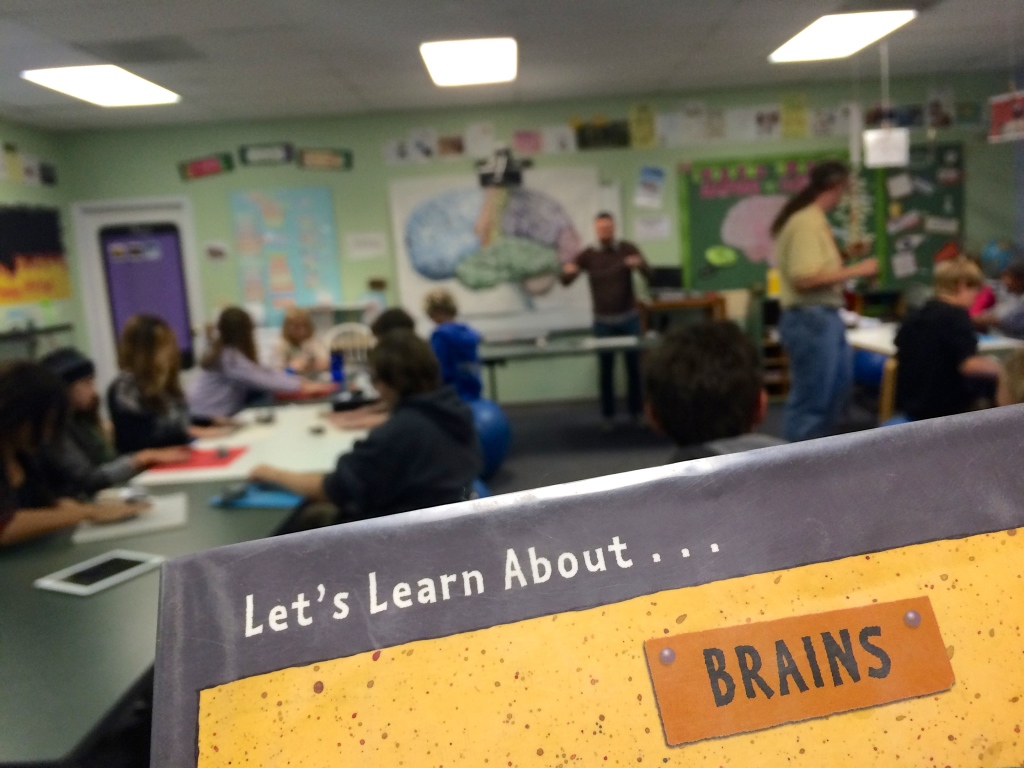
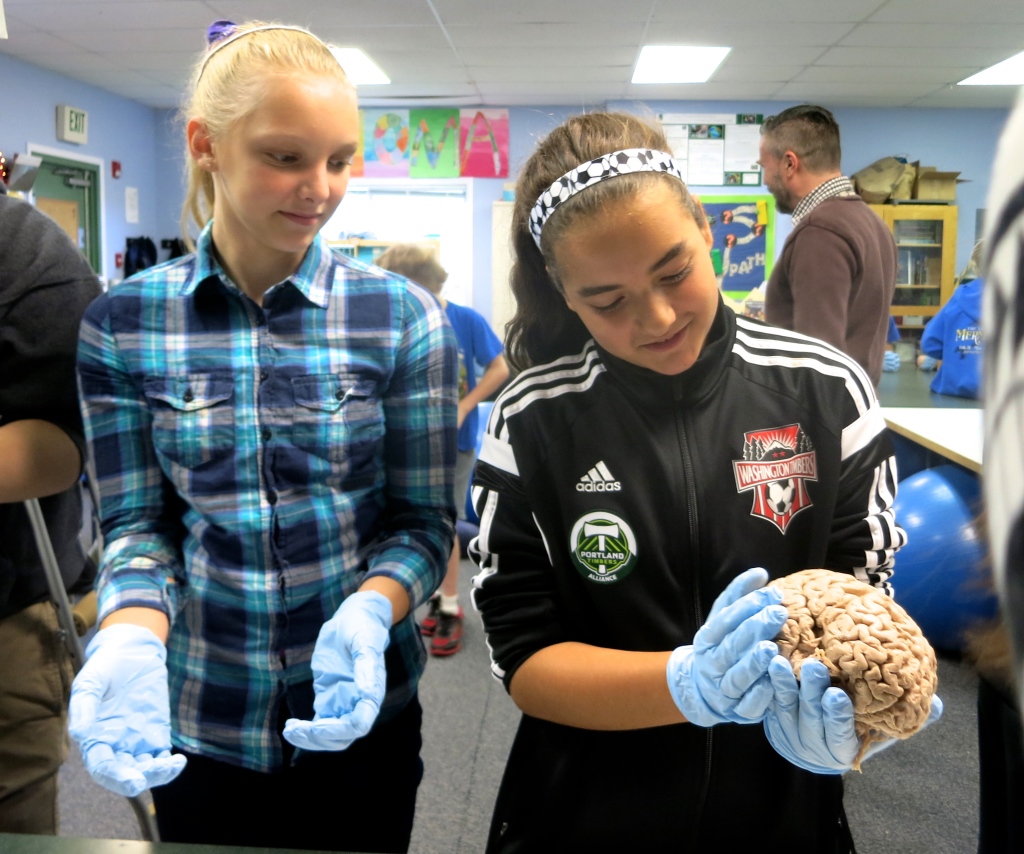
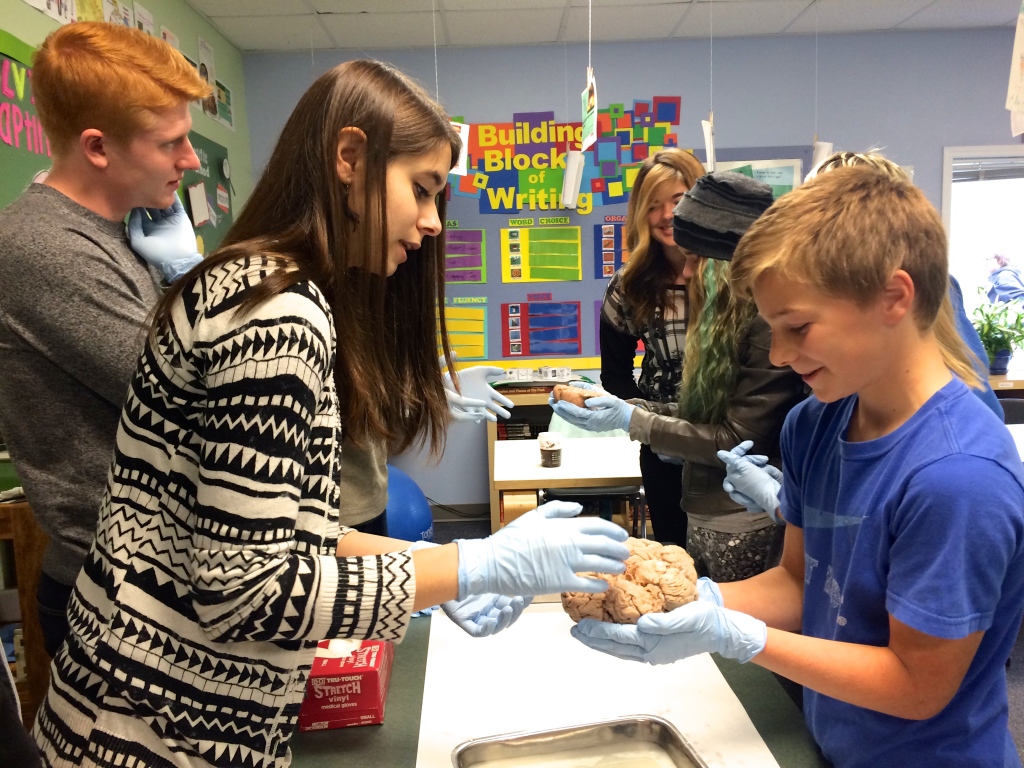
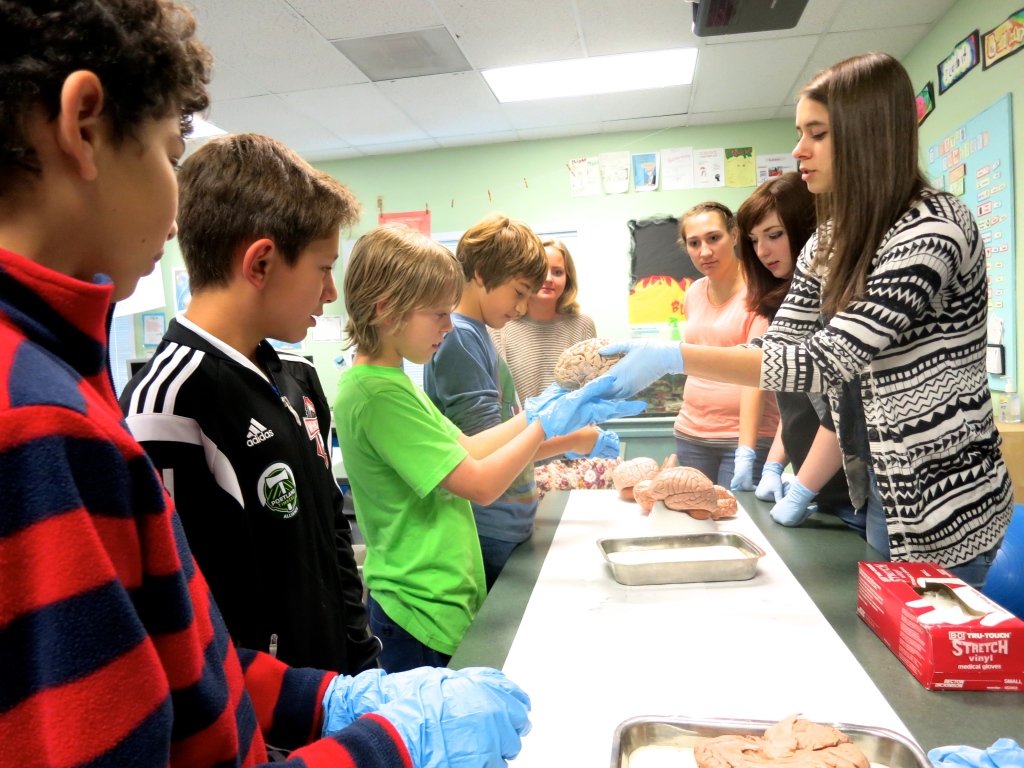
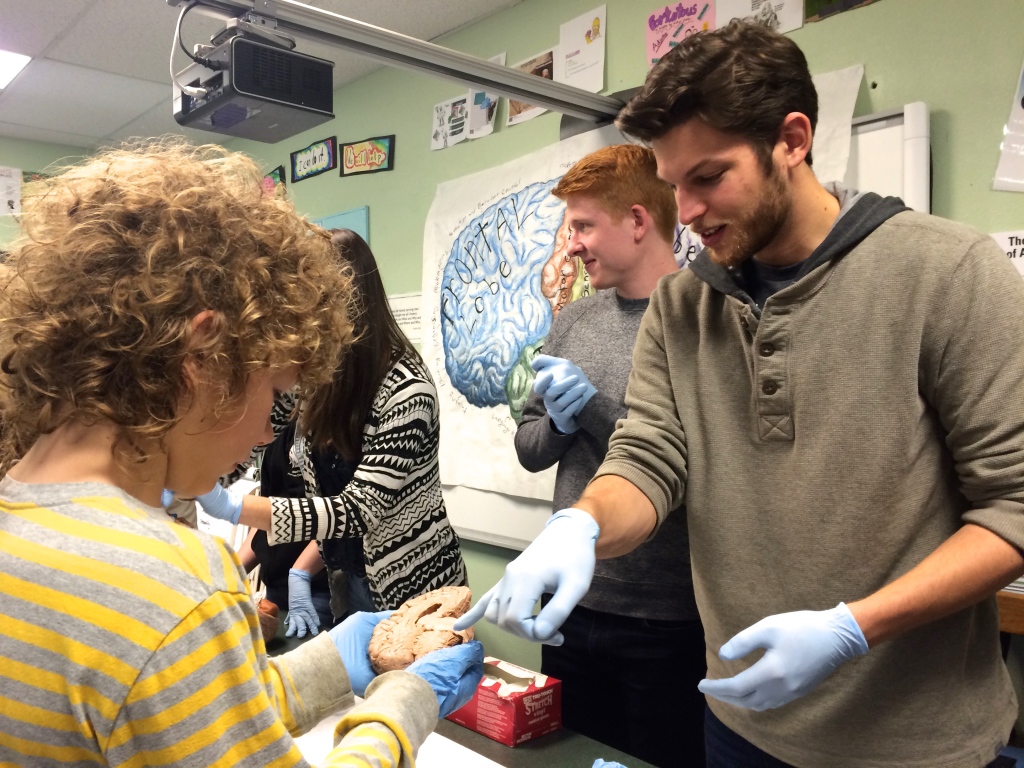
After examining cerebrums, Jeff Leake helped everyone create their own brain models, out of clay, that would be fired in a kiln after we left the school. Their teacher, Caitlin, asked students to explain which areas of their brains were engaged by various aspects of this creative project (tactile, parietal; decision making, frontal, etc…).
An enjoyable, educational experience for all involved..!